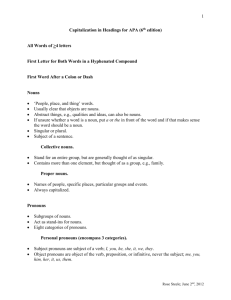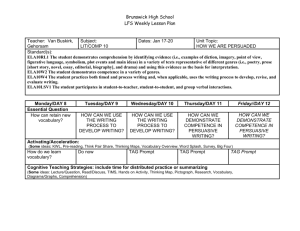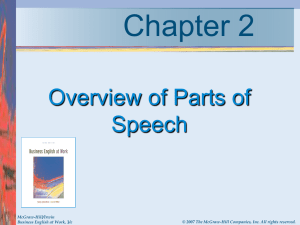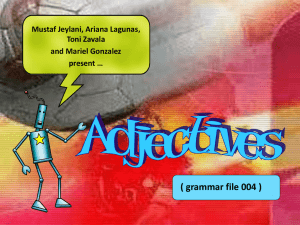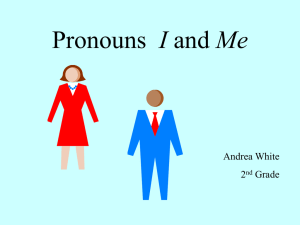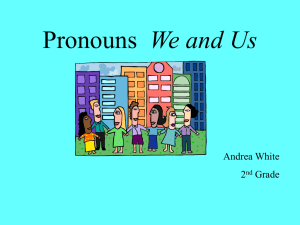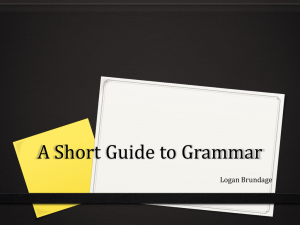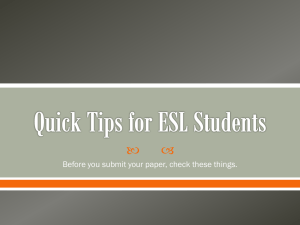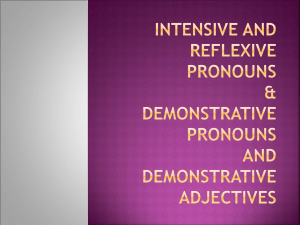Nouns, Pronouns, Verbs Review
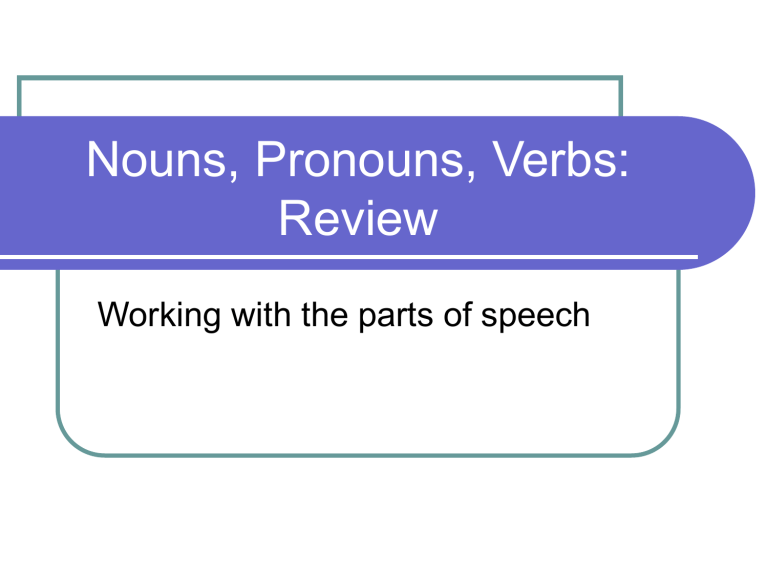
Nouns, Pronouns, Verbs:
Review
Working with the parts of speech
What are Nouns?
They are people, places, things, or ideas
There are abstract, concrete, common, proper, collective, compound nouns
Identify the nouns in the following sentences:
John walked to the store with his brother.
John, store, and brother are the nouns
Lexis is a very interesting girl.
Lexis and girl are the nouns
What are Pronouns?
Pronouns are words that take the place of nouns and/subjects so that sentences don’t sound so repetitive
There are the 1 st person (I, me, my, mine, myself, we, our, us), 2 nd person
(you, your, yours), and 3 rd person (he, she, it, him, her, hers, his, its, they, them, their, theirs) pronouns
Pronouns Continued
There are Demonstrative pronouns: this, that, these, those that point out a specific person, place, or thing
Interrogative pronouns: who, whom, whose, which, and what that begin a question
Relative pronouns: who, whom, whose, which that tell more about a noun or subject
Indirect pronouns: anyone, anybody, you, someone, somebody, everybody, each, others, and more that have no antecedent
Pronoun Practice
Identify the pronouns in the following sentences:
You really should clean up your room.
Yes, “you” and “your” are the pronouns
When Mr. Victor says that everyone is responsible for their own education, he hopes that his students take this to heart.
everyone, their, he, and his are all pronouns
What’s a Verb?
A verb describes an action or state of being
Verbs are used to show what a noun does or is
There are action verbs, linking verbs, being verbs, helping verbs to name a few
Remember, substitute is or are to figure out if the verb is action or linking
Verb Practice
Identify the verbs in the following sentences:
Mr. Victor speaks rather loudly.
“speaks” is the verb
He often moves around his room when he talks.
“moves” and “talks” are the verbs
If there is something funny, Mr. Victor laughs along with his students.
“is” and “laughs” are the verbs
